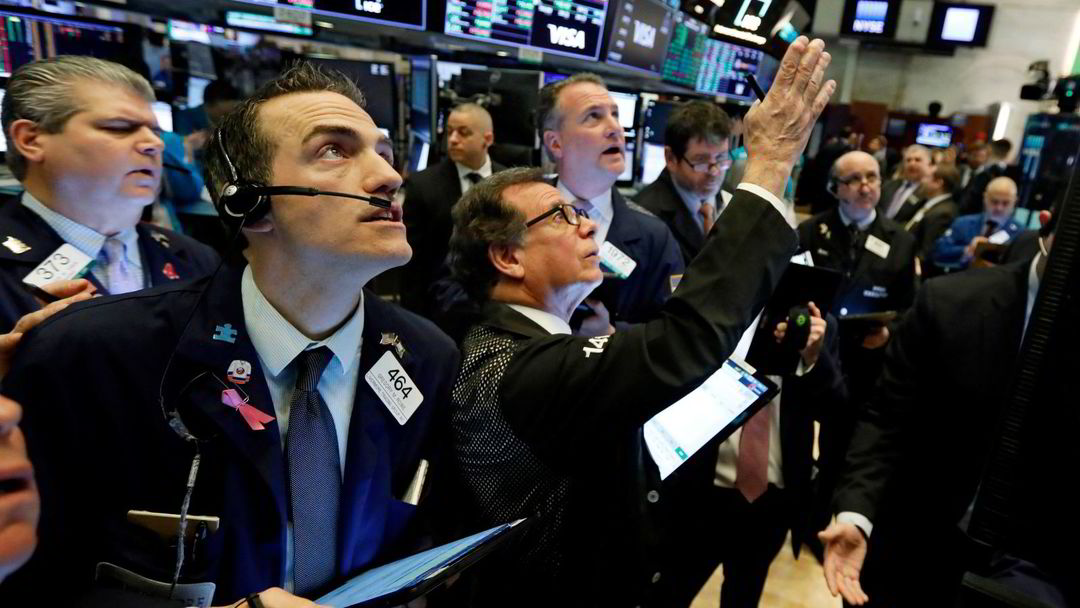–
US stock futures fell sharply after Russia took seriously the invasion plans and military power moved across national borders and into Ukraine. The invasion caused the leading indices on Wall Street to fall immediately above two percent in pre-trading on Thursday.
The fall was sharp at the opening of the trading day. The Dow Jones was down 2.55 percent, the S&P fell 2.5, while the technology-heavy Nasdaq index fell over 2.7 percent just after opening. Since then, the indices have recovered somewhat, but the fall is still significant.
This is what the leading US stock exchange indices look like at the opening:
- The industry-heavy Dow Jones index is down 1.74 percent.
- The Nasdaq technology index is down 1.44 percent.
- The broad S&P 500 index opens down 2.25 percent.
Dow futures fell 810 points in pre-trade, or 2.4 percent, while futures related to the S&P 500 were down 2.5 percent, and are in correction after falling more than ten percent since the peak. Nasdaq 100 futures responded most strongly, falling as much as three percent. The index is about to enter a so-called bear market, ie it is down over 20 percent from the top.
Market reactions to Russia’s invasion of Ukraine:
–
- US stock market indices fell over two percent in pre-trading on Thursday.
- Stock market falls have affected the stock markets in Asia and Europe on Thursday.
- The energy companies, on the other hand, are experiencing an increase as raw material prices climb further upwards as a result of the situation.
- Brent spot North Sea oil, used as a reference price for oil trading worldwide, jumped 7.7 percent to $ 104.56 a barrel. The oil price thus passed the 100-dollar level for the first time since 2014.
- European gas prices rise sharply: The Dutch monthly contract jumped over 40 percent to 125 euros per megawatt hour on Thursday, Bloomberg reports.
- In the fixed income market, there is also movement, and the US ten-year fell above 10 basis points on Thursday night. At the moment, the ten-year-old is trading at 1.87 percent. At the same time, interest rate expectations in the US have fallen after the war in Ukraine has picked up.
Marked i panikkmodus
Energy companies rose as a result of rising commodity prices. Devon Energy rose five percent and Chevron rose 4.2 percent in pre-market trading.
– The Russian invasion of Ukraine puts the markets in a panic mode. Investors are throwing shares out of their portfolios and fleeing to safe havens, says Alexander Zumpfe, senior broker at Heraeus Metals Germany GmbH & Co, according to Bloomberg.
The US ten-year, benchmark index for 10-year bonds fell to 1.86 percent as investors preferred to look for safe bonds, writes CNBC.
Bank stocks were among the big early losers, with Bank of America falling four percent and Bank of New York Mellon falling 6.3 percent in pre-market trading.
Several sanctions increase unrest
Leading politicians in the EU and the US are expected to respond with “massive” sanctions “unparalleled”, and it is expected that US President Joe Biden will today adopt “serious” sanctions against Russia and personally against the country’s President Vladimir Putin.
During the trading day on Thursday, it is expected that the sanctions that will be introduced will be known, which will be decisive for the development of the stock exchange indices on Wall Street.
Russian authorities, for their part, have asked countries in the West to keep ties with the country, despite the fact that the country has attacked Ukraine.
–
The stock market has been characterized by unrest since the beginning of the year, but after the situation with Russia escalated, stock market unrest has increased considerably. The economic upswing in the wake of the pandemic has led to inflationary pressures, and a tightening of monetary policy and higher interest rates have been announced, which is also contributing to stock market turmoil.
Wall Street fluctuated sharply on Wednesday and the Dow Jones ended with a fall of around 464 points, or 1.3 percent. At closing time, the index was at its lowest level so far this year. The S&P 500 fell 1.8 percent, moving deeper into correction, ending the day with a 12 percent decline from the record high on January 3rd. The technology-heavy Nasdaq Composite lost 2.6% and is now close to the bear market’s territory.(Terms)Copyright Dagens Næringsliv AS and / or our suppliers. We would like you to share our cases using a link, which leads directly to our pages. Copying or other use of all or part of the content may only take place with written permission or as permitted by law. For additional terms look here.
–


